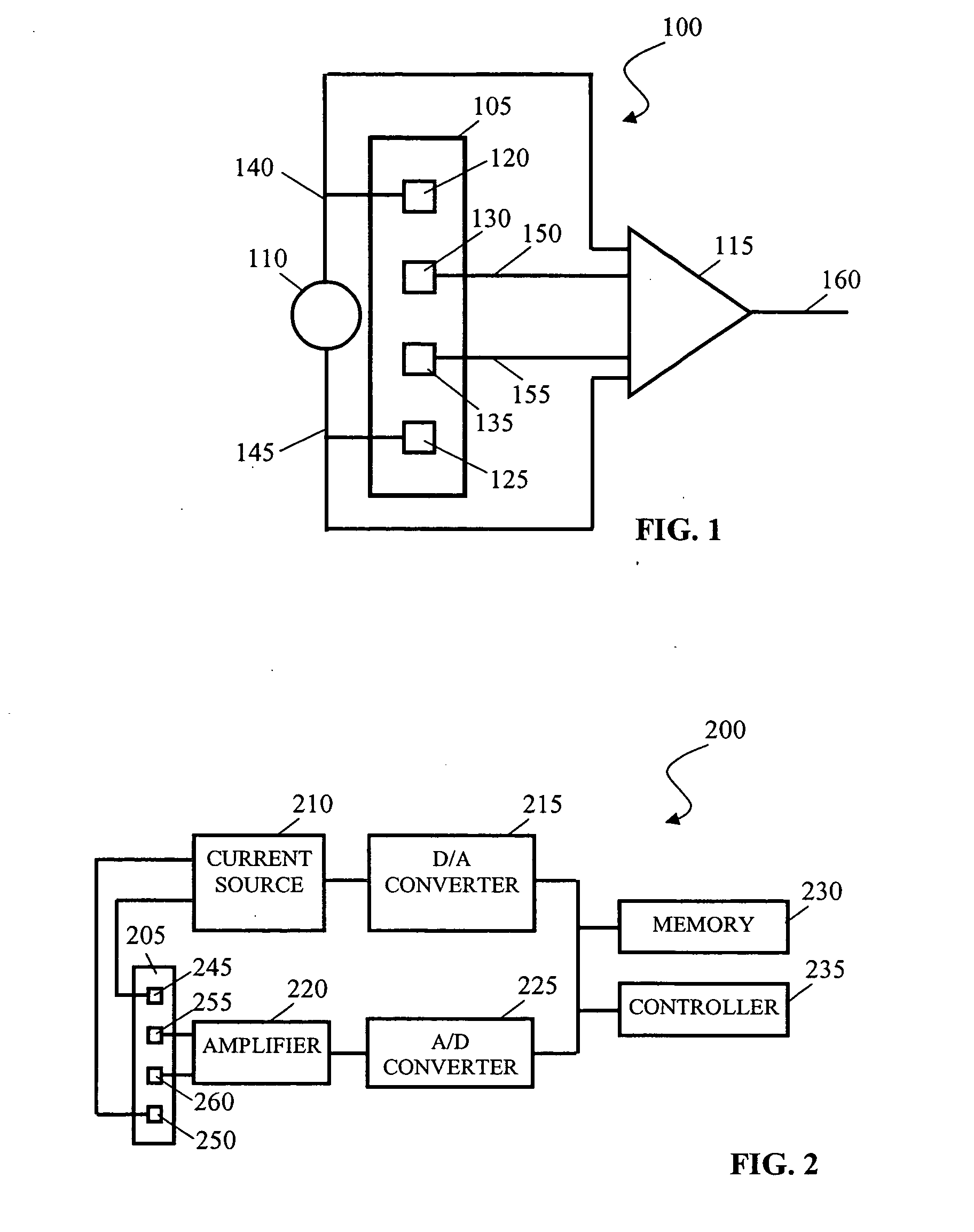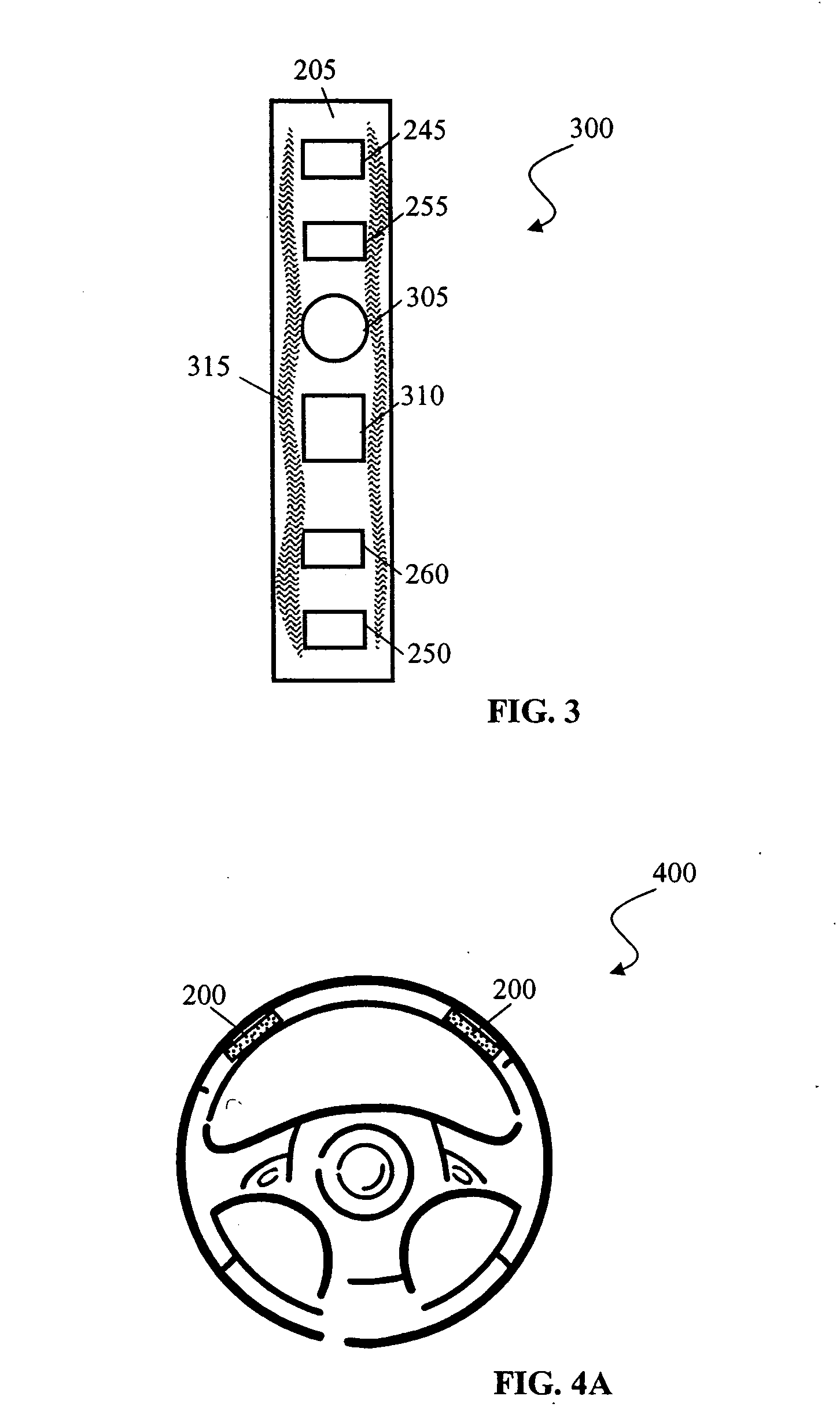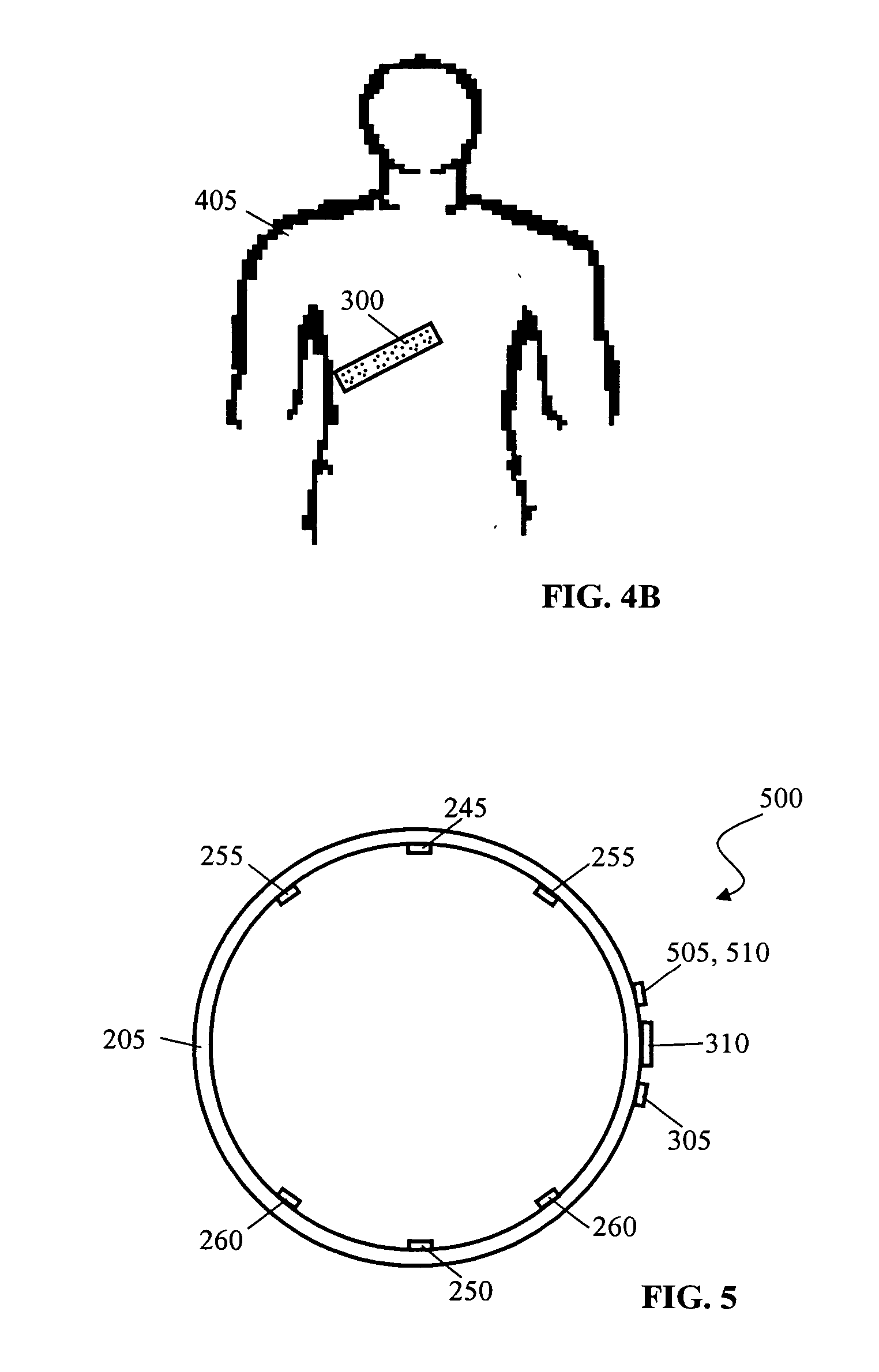Hydration monitoring
a technology of hydration monitoring and monitoring equipment, applied in the field of monitoring the hydration of organisms, can solve the problems of affecting sweat production, affecting and excessive depletion of body water, and achieve the effect of limiting the mobility of ambulatory subjects
- Summary
- Abstract
- Description
- Claims
- Application Information
AI Technical Summary
Benefits of technology
Problems solved by technology
Method used
Image
Examples
example 1
Ambulatory Bioelectric Impedance Monitoring to Monitor Dehydration of an Individual
[0161] Many individuals find themselves in activities or in environments that are conducive to dehydration. Such activities may include athletics, public safety activities performed by officers / firefighters, combat, and other activities requiring physical exertion. Such environments include hot and humid locales.
[0162] In these cases, one or more strap probes can be deployed along a thigh of such individuals to continually monitor the hydration of such individuals. Alternatively, probes can be incorporated into clothing such as the pants and sock illustrated in FIGS. 9A and 9B.
[0163] During the initialization of hydration monitoring, a range of data, including hydration monitoring results and the results of monitoring other bioparameters, can be transmitted to one or more data processing devices that perform analysis operations. The transmitted data can be used by such devices to establish a baseli...
example 2
Ambulatory Bioelectric Impedance Monitoring of Individuals Using a Data Collection Apparatus Incorporated into Other Equipment
[0167] A data collection apparatus can be incorporated into a device commonly used by individuals who find themselves in activities or in environments that are conducive to dehydration. For example, a data collection apparatus can be incorporated into safety equipment, the handlebars of a bicycle, a helmet, or gloves. When hydration monitoring results indicative of a disease state such as dehydration are obtained, the data collection apparatus can alert the individual and / or others in the individual's vicinity of the results. For example, a light on the outside of a football player's helmet can flash to alert teammates and coaches of the player's hydration monitoring results. These alerts can be graded with the severity of the hydration monitoring results so that the player and teammates have timely warning prior to passing critical hydration thresholds, suc...
example 3
Ambulatory Bioelectric Impedance Monitoring of Individuals in Motorized Vehicles
[0168] Many individuals who operate motor vehicles are ambulatory but have their mobility restricted in that they are confined within the vehicle for extended times. Such vehicles include cars, airplanes, tanks, ships, and other transportation devices.
[0169] Probes for monitoring the hydration of such individuals can be incorporated into motor vehicles, e.g., at a steering wheel, joystick, or other surface that contacts operating individuals either continually or intermittently. Intermittent contact can be accommodated by limiting data analysis to data obtained during periods of good contact between the probe and the monitored organism.
[0170] Such vehicles can also include a data collection apparatus. In some implementations, the data collection apparatus can share generic components with the vehicle to perform various operations. Such components include vehicle display systems and data communication ...
PUM
 Login to View More
Login to View More Abstract
Description
Claims
Application Information
 Login to View More
Login to View More - R&D
- Intellectual Property
- Life Sciences
- Materials
- Tech Scout
- Unparalleled Data Quality
- Higher Quality Content
- 60% Fewer Hallucinations
Browse by: Latest US Patents, China's latest patents, Technical Efficacy Thesaurus, Application Domain, Technology Topic, Popular Technical Reports.
© 2025 PatSnap. All rights reserved.Legal|Privacy policy|Modern Slavery Act Transparency Statement|Sitemap|About US| Contact US: help@patsnap.com



